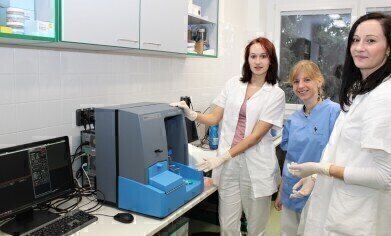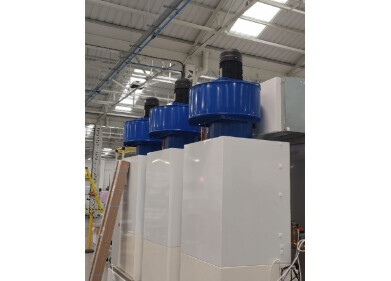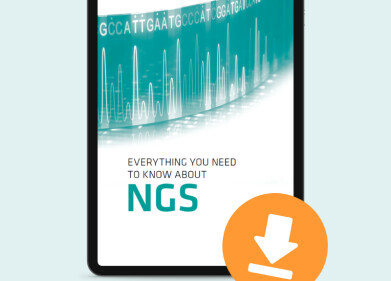Laboratory Products
Report on Nanoparticle Tracking Analysis use in the Brno Veterinary Research Institute
Mar 14 2014
The central theme of Dr Jaroslav Turanek's research group (Department of Pharmacology and Immunotherapy), at the Veterinary Research Institute in Brno, Czech Republic, is to apply synthetic and bioorganic chemistry. This work is performed in collaboration with King's College London and the Institute of Organic Chemistry and Biochemistry, Prague, for the design and construction of therapeutic nanoparticles to develop drug delivery systems and nanocarriers for construction of recombinant vaccines.
In parallel, the research group of Dr Miroslav Machala (Department of Chemistry and Toxicology) at Veterinary Research Institute focuses upon environmental nanoparticulate pollutants. Characterisation of airborne particles is conducted using electron microscopy, but in vitro tests on cell culture require knowledge of the real structure of nanoparticles in the tissue culture medium.
Detailed particle distribution and kinetics of aggregation in this heterogeneous system is impossible to obtain using electron microscopy and hence Nanoparticle Tracking Analysis, NTA, is the method of choice. It is noted that some metastable aggregates can disaggregate due to high dilution of the sample required for NTA analysis. For this reason, Dynamic Light Scattering, DLS, and NTA are used as suitable complementary methods in the laboratory.
The Malvern NanoSight NS500 system is used in the VRI laboratories as alongside other techniques including DLS (Zetasizer Nano ZS), static light scattering, Gel Permeation Chromatography, electron microscopy and Field Flow Fractionation.
Explaining their choice of NanoSight, Dr Turanek said: "We chose NTA as a convenient and rapid method for characterisation of nanoparticles in heterogeneous preparations like liposomes and their complexes with proteins, DNA and polysaccharides. A set of these techniques is used for the complex characterisation of the structure of the nanoparticles, the kinetics of their preparation, the dynamics of morphological transformation and, finally, their stability. NTA perfectly fits our needs and has become a standard method in our methodological portfolio. The most advantageous feature of NTA is that it makes it possible to visualise each nanoparticle and then to obtain more detailed size distributions based on individual particle measurements. DLS is used as precise complementary method for the characterisation of nanoparticles below 20 nm for proteins and other biopolymers. Combination of these two methods, NTA and DLS, with separation methods (GPC, FFF) and electron microscopy is preferred to get the full insight to structure and dynamics of nanoparticles in our sample systems."
Digital Edition
Lab Asia 31.2 April 2024
April 2024
In This Edition Chromatography Articles - Approaches to troubleshooting an SPE method for the analysis of oligonucleotides (pt i) - High-precision liquid flow processes demand full fluidic c...
View all digital editions
Events
Apr 22 2024 Marrakech, Morroco
Making Pharmaceuticals Exhibition & Conference
Apr 23 2024 Coventry, UK
Apr 23 2024 Kintex, South Korea
Apr 23 2024 Seoul, South Korea
Apr 24 2024 Jakarta, Indonesia

.jpg)






.jpg)









